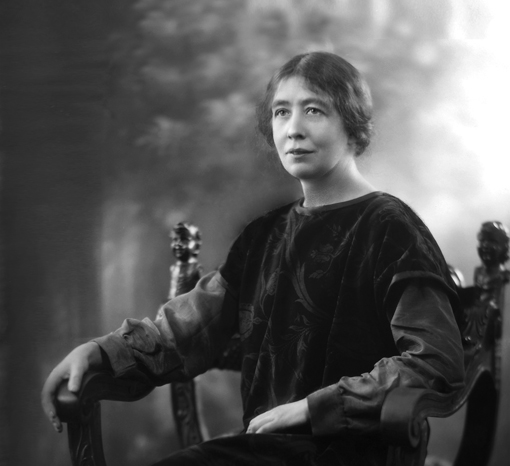by Ceri Dingle and Steven Poole
This article first appeared in ViewFinder 86
We had not set out to ‘crowd film’ but that’s what happened and it became an epic affair
We started making a documentary about Sylvia Pankhurst with volunteers for a short ‘making history’ programme for our Citizen TV channel WORLDbytes. But it couldn’t be done; we just couldn’t do justice to this amazing woman in a fifteen-minute slot. Plus, so many wanted to be involved: young people who’d heard of her -although it usually transpired they meant her mother Emmeline (the acceptable suffragette); older citizens; and organisations with suffrage connections. We had not set out to ‘crowd film’ but that’s what happened and it became an epic affair. Sylvia we suspect would have approved, her approach was always to turn outwards, involve as many as possible and win the arguments. Sylvia was expelled from the Women’s Social and Political Union (WSPU) the suffragette organisation established in 1903 by her mother Emmeline, for her opposition to World War 1 and taking up ‘other issues’ especially support for the Dublin lockout and Irish freedom. Consequently she set up her own East London Federation and set out to win the mass of working class people in London’s impoverished East End to the cause, not simply of votes for women but for universal suffrage and ultimately complete social transformation. Her mother’s elite organisation by contrast wanted no truck with the lower orders and stopped campaigning to support the war effort.
To cover her life we read numerous tracts by potential interview subjects and shot hours of footage, yet much material did not ring true. Sylvia’s story had been re-written to suit: she had we were told left the WSPU in opposition to its militancy, but this was not true; it was said she was a pacifist – nowhere near the truth and she had even been claimed as an early environmentalist. Any scant look at her writings – from early copies of her paper, The Workers’ Dreadnought, to her unpublished work ‘The Red Twilight’, to the security files held on her – demonstrated the inaccuracy of many portrayals. Sylvia was imprisoned more than any of the 1000-plus suffragettes who suffered jail and force-feeding for their militancy; she set up a people’s army; and was ultimately jailed for calling for mutiny. She opposed Malthusian ideas and supported abundance for all, hardly a prototype green outlook. As she famously put it:
Our desire is not to make poor those who today are rich, in order to put the poor in the place where the rich now are. We wish to abolish poverty and to provide abundance for all. We do not call for limitation of births, for penurious thrift, and self-denial. We call for a great production that will supply all, and more than all the people can consume. Such a great production is already possible, with the knowledge already possessed by mankind (from the front page of The Workers’ Dreadnought, 28 July 1923)
Sylvia promoted the cause of the Bolsheviks in Russia, set up the first Communist party in Britain and made opposition to racism and Imperialism her lifelong cause. Sylvia’s story needed re-telling and clearly the only way to do it was to stick to original sources, however voluminous. But how then to best represent her? Reconstruction we agreed wouldn’t work; predominant voice over would be too soporific; presenter lead, maybe, but where when all but a few landmarks from her East End stomping ground have been demolished?

The breakthrough came when we gained an interview with her elderly son Richard Pankhurst on a visit to the UK (he lives in Ethiopia). Richard and his wife Rita laid the basis for interweaving her true story with presenter lead pieces, archive and imagery. Professor Mary Davis was also a godsend as her book, Sylvia Pankhurst: A Life in Radical Politics (1999), clearly reflected tireless original research. There were, in the end, many contributors - from Beverly Cook at the Museum of London to Bishopsgate library and the parliamentary archivist - too many to mention here, who helped us bring Sylvia to life. From her lesser-known paintings and artworks to security files, to photographs that wouldn’t cost us a copyright arm and a leg, we began to piece together the material for a visual essay that would leave no stone unturned, yet summate her historical importance. With over 100 volunteers on the case and learning to shoot in the process, as Sylvia believed, everything is possible. The final film may not have Hollywood production values but its compelling subject never fails to engage and screenings to date have raised tremendous debate, another thing our forgotten heroine would have approved of.
About the Author:
Ceri Dingle is Director of WORLDwrite, an education charity with an uncompromising commitment to global equality whose campaigning slogan is ‘Ferraris for all’. WORLDwrite campaigns for change using film and through an online news channel WORLDbytes. Ceri established a documentary film training facility for young volunteers and the charity’s campaigning channel WORLDbytes. She has assisted young volunteers in producing over 100 challenging programmes in the past year. She directed a series of 5 documentaries entitled Pricking the Missionary Position shot in Ghana, West Africa as well as the films Flush it and Corruptababble which have been taken up by educational institutions globally.
N.B. Dr Steven Poole provides an analysis of the finished documentary, now available on DVD, here.